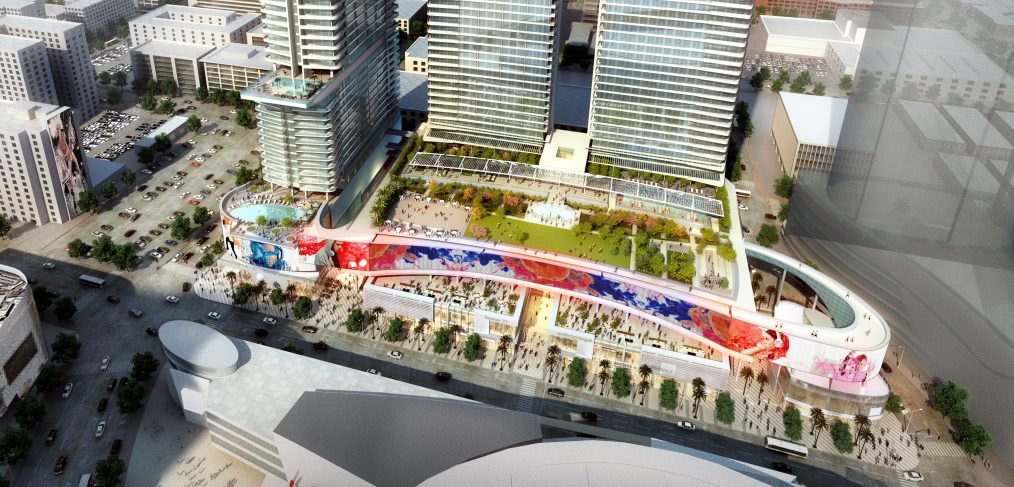
A Longer Stay: Designing for Wellness
Among the latest trends in multifamily residential design are strategies to support tenants’ health and well-being.
It’s fair to say that Los Angeles has a bit of an infatuation with healthy living.
Whether its the Hollywood influence or the warm, sunny climate that makes Angelenos more body-conscious, barre studios, juice cleanses and upscale vegan eateries have come to dominate the city’s cultural landscape. Los Angeles’s health nut reputation has even made us historically vulnerable to our share of charismatic conmen and scammers touting the latest miracle products or methods for optimal health.
When it comes to designing a home for everyone from the health-conscious to the health-obsessed, it’s advisable to take a comprehensive approach to gauging what health and wellness really mean—not just in LA, but across the country.
According to the National Wellness Institute, there are six dimensions of wellness: how a person 1) contributes to their community; 2) enriches their life through work; 3) develops belief systems; 4) engages in physical activity, healthy eating and self-care; 5) builds self-esteem and maintains a sense of direction; and 6) engages in stimulating mental or creative endeavors. Designing for these requires pushing beyond the standard fitness center and sauna to meet a more inclusive set of needs.
Why? Because designing for wellness results in a quicker lease-up or sale and increases the likelihood of maintained and extended leases as well as higher property values and unit sales; the case studies in Urban Land Institute’s Building for Wellness: The Business Case illustrate as much.
Here in LA, our team has been working on a project that takes a broader view of designing for wellness. Oceanwide Plaza has caught the attention of local and national media, in part thanks to its prominent location in LA’s South Park neighborhood across from the Staples Center. Three high-rise towers house 504 units as well as a 183-key hotel as part of CallisonRTKL’s Los Angeles Sports and Entertainment District master plan.
Below are a few key design solutions that help to optimize health and wellbeing for Oceanwide Plaza’s future residents.
Connected Oasis
In the midst of a busy city, sometimes it can be difficult to find respite from all the concrete, traffic and noise. At the same time, it’s possible to design a unit that affords residents the feel of a quiet escape as well as a connection to the dynamic urban environment. At Oceanwide Plaza, exterior views and expansive balconies provide residents with stunning downtown vistas and comfortable indoor and outdoor space from which to enjoy them. Unit ceiling heights are 9’ 10” and 10’ 10”, adding to the spacious feel. Operable windows allow residents control over the flow of fresh air and natural light throughout the unit.
Better Together
In further proof that wellbeing is more than treadmill time and salads for dinner, it is also well-documented that overall satisfaction with a residential apartment is heavily impacted by social interaction and the ease with which a feeling of community can be established with fellow residents and neighbors. That said, Oceanwide Plaza finds a way to combine the two: a 75,000 square foot elevated private park with a great lawn, jogging track and extensive landscaping provides plenty of space to get your heart rate up, connect with nature and say hello to your neighbors. Outdoor kitchens and dining enhance the opportunities for fun and meaningful interaction.
Prioritizing Pets
Speaking of companionship, designers are also finding themselves increasingly concerned with accommodating man’s best friend. A number of studies have shown that pet ownership has been found to lower heart rate and extend life expectancy, and as such, designing for wellbeing also means designing for four-legged furry tenants. The amenities range from the practical to the outlandish: play areas, pet wash stations and on-site veterinarians cater to city pets and their owners, and some posh pets may even be lucky enough to score a rooftop swimming pool. The aforementioned private park at Oceanwide Plaza includes two dog parks, and Fido can clean up after his play date with a visit to the in-house professional groomer.
Safe and Secure
Tenant security becomes all the more important in concentrated urban areas. The ideal security system will be multi-layered to provide peace of mind. Secured parking, a 24/7 concierge, electronic card readers for elevators and unit entries as well as extensive closed circuit camera systems help to ensure that people’s homes remain protected.
These examples only begin to hint at the complex challenge of designing for health and wellness as it pertains to multifamily residential. The possibilities are endless, and guidelines like the WELL Building Standard are helping developers and designers alike see the value in investing design solutions for the built environment that support these goals. As trends come and go, basic human needs remain the same. It is our responsibility to design with the end user front of mind—and to do it well.
